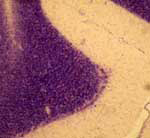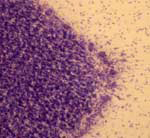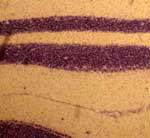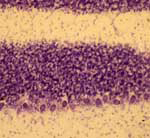Here are some interesting statistics* about neurons in humans and other animals (remember that these are averages because there is a lot of variability in the nervous system!):
- Average number of neurons in the human brain = 100 billion
- Average number of neurons in the octopus brain = 300 million
- Rate of neuron growth during fetal development in utero = 250,000 neurons/minute
- Diameter of a neuron = 4 to 100 microns
- Length of giraffe primary afferent axon (from neck to toe) = 15 feet
- Velocity of signal transmitted through a neuron = 1.2 to 250 miles/hour
- There are as many neurons in the human brain as stars in the Milky Way
- The number of ways information travels in the human brain is greater than the number of stars in the universe
What if we lined up all the neurons in our body? How long would that line stretch?
Let's assume that one neuron is about 10 microns long. Remember, this is just an example, because neurons come in all different sizes. So, if we line up 100 billion neurons which are 10 microns long...
100,000,000,000 neurons x 10 microns = 1,000 km or about 600 miles!
This may help with the math:
1,000 microns= 1millimeter (mm)
10 mm = 1 centimeter (cm)
100 cm = 1 meter (m)
1,000 m = 1 kilometer (km)










